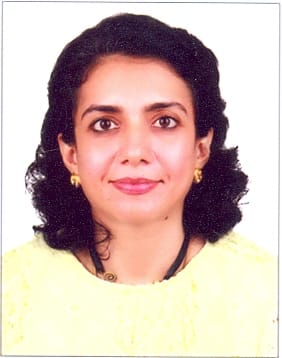- 27 April, 2025
- Contact Us
- New Mail
- Skip To Main Content
- Screen Reader Access

| Designation: |
Principle Scientist
|
| Email Id: | s_tandon[at]neeri[dot]res[dot]in |
| Qualification: | Ph.D |
| Specialization: |
Environmental Science
|
| Address: |
Mumbai Zonal Lab, NEERI, Nagpur
|
| Biodata: |
| Sr. No. | Publication Name |
|---|---|
| 1 |
Methane emission potential and increased efficiency of a phytoremediation system bioaugmented with bacillus firmus xjsl 1-10
Horizontal subsurface flow constructed wetland mesocosms (HSSCW) designed to treat municipal waste water were bioaugmented with Bacillus firmus XJSL 1-10. The efficiencies of the three HSSCW mesocosms (non-vegetated HSSCW, Schoenoplectus validus HSSCW and Bambusa vulgaris HSSCW) were assessed. Bioaugmentation not only enhanced the efficiency of the phytoremediation system but also reduced methane emission from an average of 51.3 mg/m2/d to 21.6 mg/m2/d in Schoenoplectus validus HSSCW and from an average of 1708 mg/m2/d to 1473 mg/m2/d in Bambusa vulgaris HSSCW. Each of the three types of bioaugmented HSSCWs showed higher purification efficiency with respect to the removal of BOD and NH4-N than the non-bioaugmented HSSCWs. The performance enhancement was most significant in bioaugmented Schoenoplectus validus HSSCW mesocosm with 48.8 and 44.8% lower BOD, and NH4-N, respectively than the non-bioaugmented HSSCW. |
| 2 |
Toxicity Characteristics of Drilling Mud and Its Effect on Aquatic Fish Populations
oxicity tests are important for assessing the effects of complex chemical mixtures, such as waste drilling mud, on aquatic ecosystems. When waste drilling mud is released into the marine environment, strong ocean currents perhaps separate the drilling mud into a solid phase (SP) and a suspended particulate phase (SPP). A comprehensive assessment of drilling mud and base oil was carried out in the laboratory for acute fish toxicity (freshwater fish, marine fish, and benthic organisms) and biodegradability. The results presented in this paper indicate that the LC50LC50 96 h for fresh water, marine and benthic organisms was in the order of base oil >SP>SSP>SP>SSP. The 28-day biodegradability of base oil was also more than that of drilling mud. The results also showed that nonaqueous drilling fluids (NADFs) are readily biodegradable. The Spearmen results clearly showed the effects on fish populations from the discharge of drilling mud into aquatic systems. The results showed that the use of NADFs instead of water-based fluids (WBFs) would have lesser adverse impact on the environment. |
| 3 |
Probability of Aluminium Toxicity from Bhandup Complex Water Treatment Plant, Mumbai: A Case Study
Bhandup Complex water treatment plant located in Mumbai, India, supplies water to most of Mumbai. The plant receives raw water from Vehar Lake. Alum has been used as a coagulant in the treatment process for the past 27 years. The backwashed water from the plant is released into Vehar Lake, which carries a significant amount of suspended matter. Therefore, a layer of sludge was deposited on the meeting point of backwashed water and Vehar Lake. The status of aluminum (Al) concentration in sludge deposits, banks, water, and sediment samples of Vehar Lake and its comparison with Al concentration of soil in the area surrounding the plant is presented in this paper. The comparison showed that the surrounding soil samples had the least Al concentration (16,394–26,081??mg/kg26,081??mg/kg), whereas the highest values of 53,882–73,382??mg/kg73,382??mg/kg and 62,096–76,496??mg/kg76,496??mg/kg were reported in upper and lower layers of sludge, respectively. This paper also discusses the detrimental effect of Al when it is available in toxic form at acidic pH. |